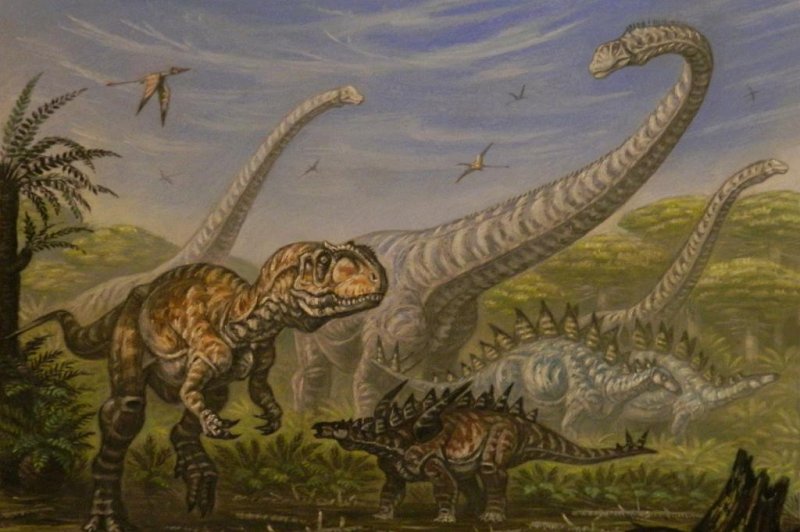According to a new study, the dinosaurs were thriving in the millennia preceding their extinction. Photo by ABelov2014/
Wikimedia Commons
March 6 (UPI) -- New research suggests the dinosaurs were ascendant in the centuries leading up to their ultimate demise. According to the findings of scientists in Britain, dinosaurs were unaffected by prolonged climatic shifts.
The cause of the dinosaurs' demise is mostly settled science. Researchers agree an asteroid impact, combined with volcanic eruptions, precipitated the dinosaurs' disappearance.
Some scientists, however, have argued dinosaurs were already on the decline -- their earlier success slowly undone by climate change -- at the time of their extinction.
To investigate the accuracy of such claims, researchers at Imperial College London, University College London and the University of Bristol compared the predictions of climate models with the distribution of dinosaur species in North America duding the Late Cretaceous.
The research team detailed the model's findings in a new paper published this week in the journal Nature Communications.
"The results of our study suggest that dinosaurs as a whole were adaptable animals, capable of coping with the environmental changes and climatic fluctuations that happened during the last few million years of the Late Cretaceous," lead researcher Alessandro Chiarenza, a doctoral student in the department of earth science and engineering at Imperial College London, said in a news release. "Climate change over prolonged time scales did not cause a long-term decline of dinosaurs through the last stages of this period."
According to the new analysis, discrepancies in fossilization conditions are to blame for the variations in the concentration of dinosaur remains recovered from Late Cretaceous deposits. Conditions in the eastern half of North America were not conducive to fossil preservation, while conditions in the western half of the continent were more fossil-friendly.
Previous surveys of Late Cretaceous fossils have failed to account for these discrepancies, and as a result, scientists have overestimated Early Cretaceous dinosaur diversity, while underestimating dinosaur diversity during the Late Cretaceous.
"Most of what we know about Late Cretaceous North American dinosaurs comes from an area smaller than one-third of the present-day continent, and yet we know that dinosaurs roamed all across North America, from Alaska to New Jersey and down to Mexico," said Philip Mannion, a research fellow at University College London.
Instead of relying exclusively on the fossil record, scientists used ecological niche modelling to predict the range of environmental conditions suitable to different types of dinosaurs. The model predicted the places different species could move to and thrive as North America's climate changed over time.
The results of the model showed the areas capable of supporting the wide range of dinosaurs over the longest period of time were also areas less conducive to fossil preservation.















